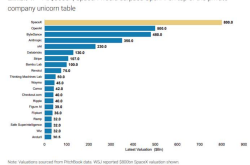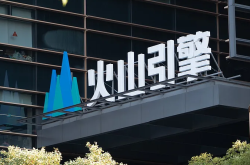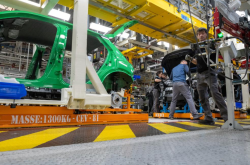Mastering the Surge of AI Narrative: Insights and Strategies
![]() 07/25 2025
07/25 2025
![]() 509
509
From early April onwards, NVIDIA's share price doubled within just three months, fueled by the resurgence of the global AI narrative. Post the recent lifting of the H20 ban, domestic market funds harbor greater expectations for domestic AI hardware and application stocks.

In the A-share market, AI-related stocks such as Zhongji Xuchuang and Xinyi Sheng, leading optical module companies, have also doubled. These companies have consistently delivered results surpassing market expectations. Despite their significant gains, their valuation for the upcoming year remains attractive, reflecting a stage of "buying cheaper and cheaper" over the past few months.
Why such a divergence in expectations? The complexity of AI investment mirrors that of innovative drugs. Even insiders struggle to pinpoint superior companies, with minimal gaps in research capabilities between professional sell-side analysts and individual investors. This leads to a gradual repair of undervalued stocks to reasonable valuations. The AI industry is in constant evolution, and the global AI narrative has just commenced. The past two years marked the 0-1 stage; the next will be the 1-10 stage, making AI an indispensable portfolio allocation.
Participating through ETFs is a prudent choice, mitigating the risk of individual stock selection while benefiting from the burgeoning AI industry both domestically and internationally. For instance, the AI ETF (159819) and the Science and Technology Innovation AI ETF (588730) have both registered gains of approximately 20% since April. As large AI models explode abroad, a similar surge domestically seems imminent.

From Chatbots to Reasoning: A Quantum Leap in Token Consumption
This year's AI market was primarily driven by Trump's January push for the Stargate project, propelling the AI sector to new heights, with NVDA leading the charge. However, the emergence of Deepseek in February triggered a significant correction due to overcrowding by global funds and market concerns about AI computing power demand.
From March to April, delays in NVIDIA's GB200 server shipments and concerns about AI computing power demand and retaliatory tariffs plunged the AI sector into a "bubble burst" phase. The AI sector in the U.S. stock market began to rebound only after the retaliatory tariffs were extended for 90 days.
Notably, despite the severe decline in the AI sector, the fundamentals of the AI industry diverged from the share price. Deepseek rapidly accelerated the upgrade of large models' reasoning capabilities, evolving them from basic chatbots to deep reasoning. This transition signifies a leap in token consumption from thousands to tens of thousands, even millions. In other words, tokens, indicative of computing power consumption, have increased by tens of times, underscoring the growing demand for computing power.
As illustrated in the chart below, since Google Gemini launched its deep thinking function, Google's token consumption surged from an average of 170 trillion per month in February to 960 trillion per month by July this year—a several-fold increase in just half a year. This trend is poised to accelerate further by the end of the year.
Google's CEO revealed that due to the surging demand for reasoning, this year's Capex has been hiked to $85 billion, with next year's capital expenditure expected to continue growing.
This is just Google, the least favored by the market. Google's capital expenditure next year may reach $100 billion, while other CSPs may invest even more, demonstrating the rapid pace of AI progress overseas.

The same holds true for domestic large models. As seen in the chart below, post the emergence of reasoning demand, the average daily token consumption of the Doubao large model soared from 4 trillion tokens at the end of last year to 16.4 trillion tokens per day.

Regarding the payment rates for AI applications targeting consumers (2C), domestic AI outperforms its overseas counterparts based on data. For instance, Kingsoft Office's WPS AI boasts a 13% payment rate, while Meitu, which has recently witnessed significant gains in Hong Kong stocks, registers a 12% payment rate. In contrast, OpenAI's payment rate is merely 4%. While there's a significant difference in user base, the payment rates are promising; it's just a matter of time before they explode.

Currently, the revenue contribution of 2C generative AI tools stands below 30%, while that of 2B AI is under 20%. On the 2C side, enterprises with a high proportion of AI revenue are concentrated in video/image processing, healthcare, and office sectors. On the 2B side, enterprises with a significant AI revenue share are focused on healthcare, office, and human resources sectors.

As illustrated in the chart below, chatbot visit data remains robust. Instead of declining linearly post the February peak, it has cultivated a loyal user base.

According to Goldman Sachs' estimates, with the lifting of the H20 export ban, internet stocks' expenditure on AI capex is poised to accelerate, potentially surpassing market expectations.

With the increasing penetration of AI applications, a synergistic growth trend between AI hardware and software is highly likely. AI hardware will spearhead this growth, followed by a software explosion.
From a medium to long-term perspective, we may still be in the 1-10 stage of AI development. Companies are currently exploring their application directions. When a few industry players develop superior models, market expansion will accelerate rapidly. While it's unclear who will reach the finish line first, configuring the entire industry through ETFs eliminates the risk of selecting the wrong company.
For instance, the AI ETF (159819) and its linked funds (012733/012734), along with the Science and Technology Innovation AI ETF (588730) and its linked funds (023564/023565), are prudent choices. They encompass leading AI hardware and application companies, enhancing the chances of success through a balanced hardware and application configuration.








